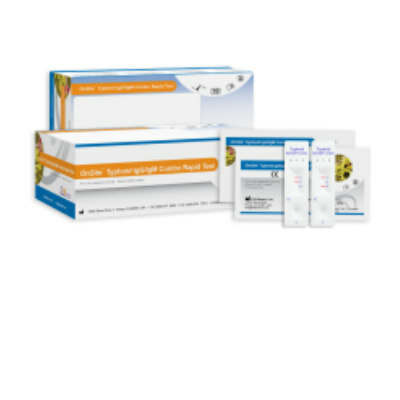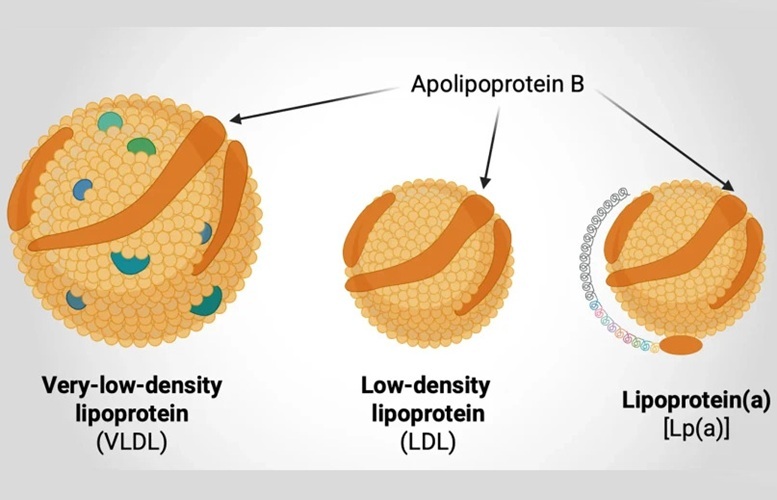LDL Particle Number Measured Using NMR Clinical Analyzer
|
By LabMedica International staff writers Posted on 25 Aug 2014 |
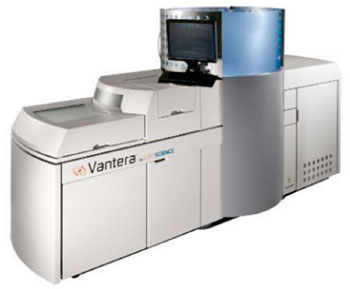
Image: The Vantera Clinical Analyzer offers the technology that has the ability to directly enumerate low-density lipoprotein (LDL) particle numbers (Photo courtesy of LipoScience).
Fully-automated high-throughput nuclear magnetic resonance (NMR) spectroscopy has been developed to enable measurements in a clinical laboratory setting.
NMR-measured low-density lipoprotein particle number (LDL-P) has been shown to be more strongly associated with cardiovascular disease outcomes than LDL cholesterol (LDL-C) in individuals for whom these alternate measures of LDL are discordant.
Scientists at LipoScience Inc. (Raleigh, NC, USA) purchased serum pools and controls from Solomon Park Research Laboratories (Kirkland, WA, USA). Controls were prepared by identifying serum samples with high and low lipoprotein ranges. Additional serum pools were prepared in-house from donor subjects identified at LipoScience or Mayo Clinic (Rochester, MN, USA). NMR spectra were acquired on the NMR Profiler (Bruker Bio-Spin; Billerica, MA, USA) or the Vantera Clinical Analyzer (Agilent Technologies; Santa Clara, CA, USA), both equipped with 400 MHz 1H NMR spectrometers.
The sensitivity and linearity were established within the range of 300–3,500 nmol/L. For serum pools containing low, medium and high levels of LDL-P, the inter-assay, intra-assay precision and repeatability gave coefficients of variation (CVs) between 2.6 and 5.8%. The reference interval was determined to be 457–2,282 nmol/L and the assay was compatible with multiple specimen collection tubes. Of 30 substances tested, only two exhibited the potential for assay interference. Moreover, the LDL-P results from samples run on two NMR platforms, Vantera Clinical Analyzer and NMR Profiler, showed excellent correlation.
The authors concluded that the successful development of a method to measure LDL-P on a fully automated platform allows NMR technology dissemination into the routine, clinical laboratory setting and creates the opportunity for NMR-based testing across a broader range of clinical applications. They point out that, several leading national reference laboratories and large hospital system laboratories have successfully integrated the Vantera into their clinical laboratory operations. The study was published on July 28, 2014, in the journal Clinical Biochemistry.
Related Links:
LipoScience Inc.
Mayo Clinic
Bruker Bio-Spin
NMR-measured low-density lipoprotein particle number (LDL-P) has been shown to be more strongly associated with cardiovascular disease outcomes than LDL cholesterol (LDL-C) in individuals for whom these alternate measures of LDL are discordant.
Scientists at LipoScience Inc. (Raleigh, NC, USA) purchased serum pools and controls from Solomon Park Research Laboratories (Kirkland, WA, USA). Controls were prepared by identifying serum samples with high and low lipoprotein ranges. Additional serum pools were prepared in-house from donor subjects identified at LipoScience or Mayo Clinic (Rochester, MN, USA). NMR spectra were acquired on the NMR Profiler (Bruker Bio-Spin; Billerica, MA, USA) or the Vantera Clinical Analyzer (Agilent Technologies; Santa Clara, CA, USA), both equipped with 400 MHz 1H NMR spectrometers.
The sensitivity and linearity were established within the range of 300–3,500 nmol/L. For serum pools containing low, medium and high levels of LDL-P, the inter-assay, intra-assay precision and repeatability gave coefficients of variation (CVs) between 2.6 and 5.8%. The reference interval was determined to be 457–2,282 nmol/L and the assay was compatible with multiple specimen collection tubes. Of 30 substances tested, only two exhibited the potential for assay interference. Moreover, the LDL-P results from samples run on two NMR platforms, Vantera Clinical Analyzer and NMR Profiler, showed excellent correlation.
The authors concluded that the successful development of a method to measure LDL-P on a fully automated platform allows NMR technology dissemination into the routine, clinical laboratory setting and creates the opportunity for NMR-based testing across a broader range of clinical applications. They point out that, several leading national reference laboratories and large hospital system laboratories have successfully integrated the Vantera into their clinical laboratory operations. The study was published on July 28, 2014, in the journal Clinical Biochemistry.
Related Links:
LipoScience Inc.
Mayo Clinic
Bruker Bio-Spin
Latest Clinical Chem. News
- ‘Brilliantly Luminous’ Nanoscale Chemical Tool to Improve Disease Detection
- Low-Cost Portable Screening Test to Transform Kidney Disease Detection
- New Method Uses Pulsed Infrared Light to Find Cancer's 'Fingerprints' In Blood Plasma
- Carbon Nanotubes Help Build Highly Accurate Sensors for Continuous Health Monitoring
- Paper-Based Device Boosts HIV Test Accuracy from Dried Blood Samples
- AI-Powered Raman Spectroscopy Method Enables Rapid Drug Detection in Blood
- Novel LC-MS/MS Assay Detects Low Creatinine in Sweat and Saliva
- Biosensing Technology Breakthrough Paves Way for New Methods of Early Disease Detection
- New Saliva Test Rapidly Identifies Paracetamol Overdose
- POC Saliva Testing Device Predicts Heart Failure in 15 Minutes

- Screening Tool Detects Multiple Health Conditions from Single Blood Drop
- Integrated Chemistry and Immunoassay Analyzer with Extensive Assay Menu Offers Flexibility, Scalability and Data Commutability
- Rapid Drug Test to Improve Treatment for Patients Presenting to Hospital
- AI Model Detects Cancer at Lightning Speed through Sugar Analyses
- First-Ever Blood-Powered Chip Offers Real-Time Health Monitoring
- New ADLM Guidance Provides Expert Recommendations on Clinical Testing For Respiratory Viral Infections
Channels
Molecular Diagnostics
view channel
New Genetic Tool Analyzes Umbilical Cord Blood to Predict Future Disease
Children are experiencing metabolic problems at increasingly younger ages, placing them at higher risk for serious health issues later in life. There is a growing need to identify this risk from birth... Read more
Spinal Fluid Biomarker for Parkinson’s Disease Offers Early and Accurate Diagnosis
Parkinson’s disease is a neurodegenerative condition typically diagnosed at an advanced stage based on clinical symptoms, primarily motor disorders. However, by this time, the brain has already undergone... Read moreHematology
view channel
New Scoring System Predicts Risk of Developing Cancer from Common Blood Disorder
Clonal cytopenia of undetermined significance (CCUS) is a blood disorder commonly found in older adults, characterized by mutations in blood cells and a low blood count, but without any obvious cause or... Read more
Non-Invasive Prenatal Test for Fetal RhD Status Demonstrates 100% Accuracy
In the United States, approximately 15% of pregnant individuals are RhD-negative. However, in about 40% of these cases, the fetus is also RhD-negative, making the administration of RhoGAM unnecessary.... Read moreImmunology
view channel
Stem Cell Test Predicts Treatment Outcome for Patients with Platinum-Resistant Ovarian Cancer
Epithelial ovarian cancer frequently responds to chemotherapy initially, but eventually, the tumor develops resistance to the therapy, leading to regrowth. This resistance is partially due to the activation... Read more
Machine Learning-Enabled Blood Test Predicts Immunotherapy Response in Lymphoma Patients
Chimeric antigen receptor (CAR) T-cell therapy has emerged as one of the most promising recent developments in the treatment of blood cancers. However, over half of non-Hodgkin lymphoma (NHL) patients... Read moreMicrobiology
view channel
Handheld Device Delivers Low-Cost TB Results in Less Than One Hour
Tuberculosis (TB) remains the deadliest infectious disease globally, affecting an estimated 10 million people annually. In 2021, about 4.2 million TB cases went undiagnosed or unreported, mainly due to... Read more
New AI-Based Method Improves Diagnosis of Drug-Resistant Infections
Drug-resistant infections, particularly those caused by deadly bacteria like tuberculosis and staphylococcus, are rapidly emerging as a global health emergency. These infections are more difficult to treat,... Read more
Breakthrough Diagnostic Technology Identifies Bacterial Infections with Almost 100% Accuracy within Three Hours
Rapid and precise identification of pathogenic microbes in patient samples is essential for the effective treatment of acute infectious diseases, such as sepsis. The fluorescence in situ hybridization... Read morePathology
view channel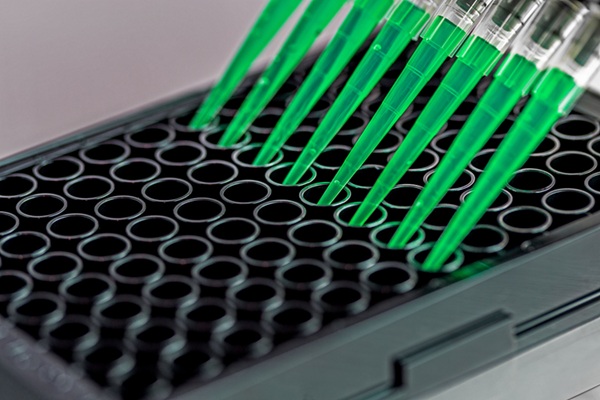
Sensitive and Specific DUB Enzyme Assay Kits Require Minimal Setup Without Substrate Preparation
Ubiquitination and deubiquitination are two important physiological processes in the ubiquitin-proteasome system, responsible for protein degradation in cells. Deubiquitinating (DUB) enzymes contain around... Read more
World’s First AI Model for Thyroid Cancer Diagnosis Achieves Over 90% Accuracy
Thyroid cancer is one of the most common cancers worldwide, and its precise management typically relies on two primary systems: (1) the 8th edition of the American Joint Committee on Cancer (AJCC) or ... Read more
Breakthrough Diagnostic Approach to Significantly Improve TB Detection
Tuberculosis (TB) remains the deadliest infectious disease globally, with 10.8 million new cases and 1.25 million deaths reported in 2023. Early detection through effective screening is crucial in identifying... Read more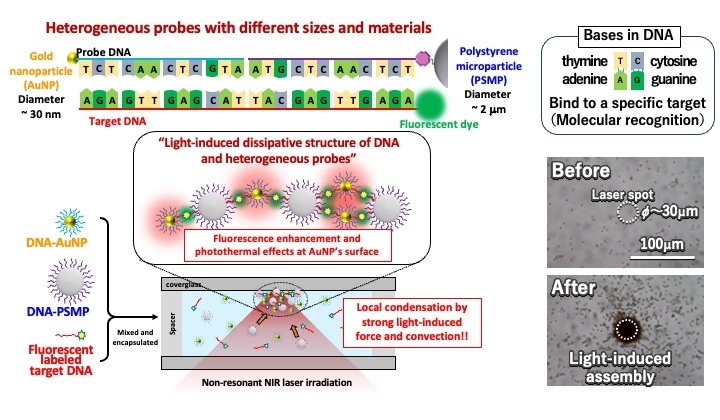
Rapid, Ultra-Sensitive, PCR-Free Detection Method Makes Genetic Analysis More Accessible
Genetic testing has been an important method for detecting infectious diseases, diagnosing early-stage cancer, ensuring food safety, and analyzing environmental DNA. For a long time, polymerase chain reaction... Read moreTechnology
view channel
Disposable Microchip Technology Could Selectively Detect HIV in Whole Blood Samples
As of the end of 2023, approximately 40 million people globally were living with HIV, and around 630,000 individuals died from AIDS-related illnesses that same year. Despite a substantial decline in deaths... Read more
Pain-On-A-Chip Microfluidic Device Determines Types of Chronic Pain from Blood Samples
Chronic pain is a widespread condition that remains difficult to manage, and existing clinical methods for its treatment rely largely on self-reporting, which can be subjective and especially problematic... Read more
Innovative, Label-Free Ratiometric Fluorosensor Enables More Sensitive Viral RNA Detection
Viruses present a major global health risk, as demonstrated by recent pandemics, making early detection and identification essential for preventing new outbreaks. While traditional detection methods are... Read moreIndustry
view channel
Cepheid and Oxford Nanopore Technologies Partner on Advancing Automated Sequencing-Based Solutions
Cepheid (Sunnyvale, CA, USA), a leading molecular diagnostics company, and Oxford Nanopore Technologies (Oxford, UK), the company behind a new generation of sequencing-based molecular analysis technologies,... Read more
Grifols and Tecan’s IBL Collaborate on Advanced Biomarker Panels
Grifols (Barcelona, Spain), one of the world’s leading producers of plasma-derived medicines and innovative diagnostic solutions, is expanding its offer in clinical diagnostics through a strategic partnership... Read more







